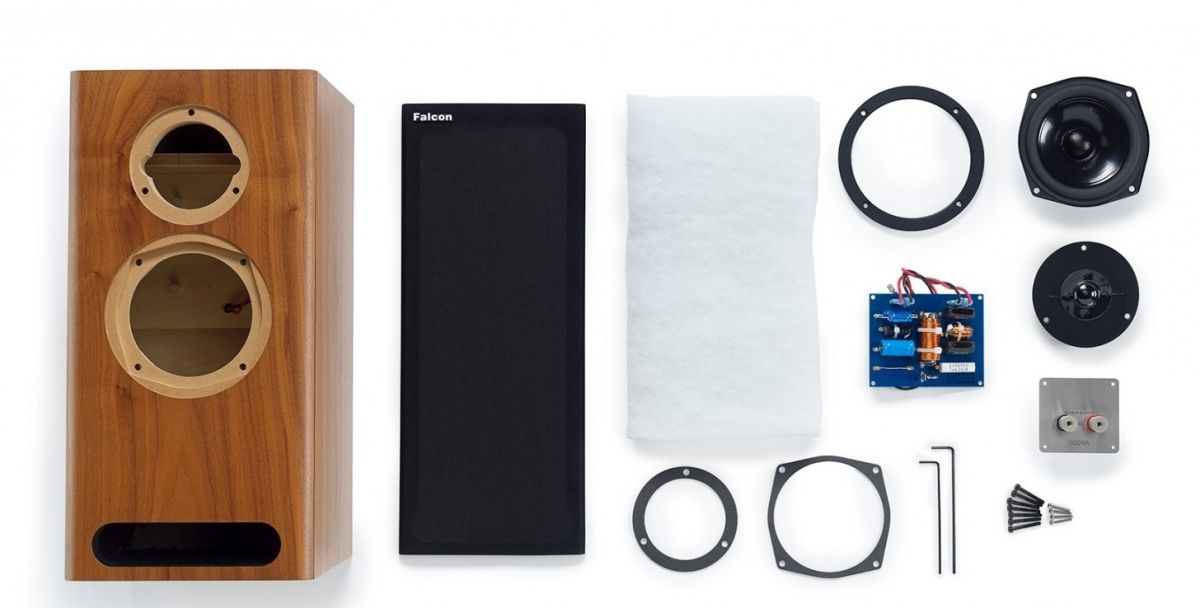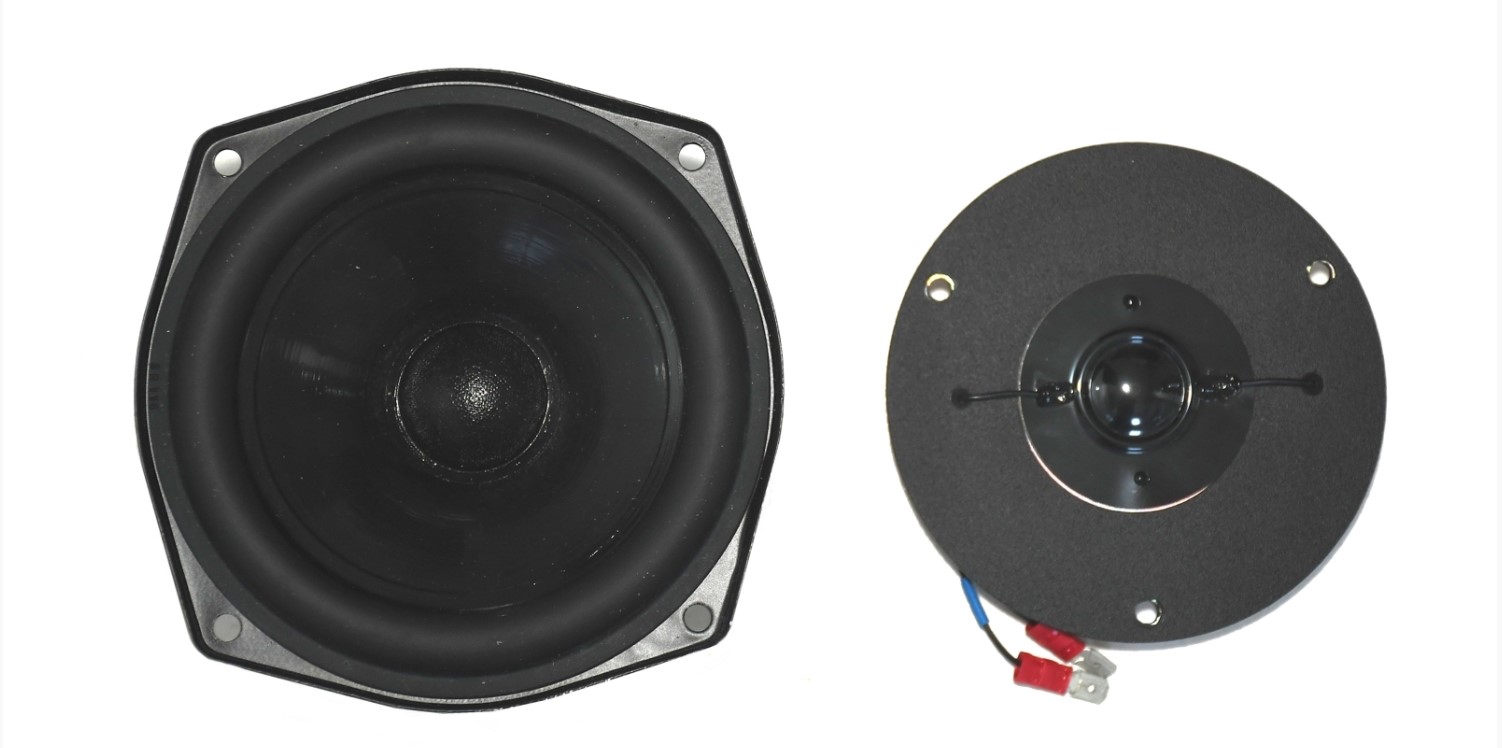
Thus, the cost of the shelf units, which were produced by the frugal British, decreased. From the average 3 - 3.5 K £ to 1.5 thousand, very attractive by European standards. It is known that any Chinese product will be cheaper, and it is not a fact that it is much worse, but not a few fastidious European music lovers are suspicious of technology from the Middle Kingdom and prefer to overpay for their own. Under the cut, more about what kind of acoustics came out from the speaker manufacturer.
DIY acoustics as a luxury item
So, before us is the IMF 100 - a classic shelf speaker-designer that does not require friendship with a soldering iron and love for carcinogenic rosin haze. Two-way bookshelf speakers with very decent speakers and a well-sized plywood cabinet. The acoustic design is an outstanding transmission line for modern acoustics, which is so loved by the enthusiasts of custom acoustics in our latitudes.

I can assume that another impressive part of the cost is just a case made of birch plywood, manufacturing and raw materials, for which they are not at all cheap in Europe. One can argue for a long time about the influence or not the influence of wood species on the fidelity of reproduction, but the fact is that wooden speakers (with the correct calculation), other things being equal, sound definitely better (or rather) than bodies made of chipboard and similar materials.
By the way, the cases are made in Italy. And I'm not talking about quality, but about cost, subject to technological standards and proper quality control, there is no difference who collected, Europeans, Chinese or residents of Central Africa. But, apparently, the British decided not to experiment with the Asian assembly, which, for sure, was reflected in the cost. The thickness of the walls of the case is quite impressive 9 and 12 mm. Plywood is richly decorated with natural walnut or mahogany veneer.
I am not an expert in the pricing of carpentry work, but I would venture to suggest that the fact of the Italian origin of the plywood cases added some tangible 15% to the cost (especially considering the marketing manipulations on this fact).
Reincarnation of the 1974 prototype
The aforementioned components already make it possible to refer the device not so much to household utilitarian items as to luxury goods, in fact, hemorrhoids with plywood and other dances with audiophile tambourines. Among other things, the acoustics were presented with cult speakers, according to the manufacturer, matched in pairs Falcon B110 and T27. These drivers were used in the prototypes of the 1974 Falcon LS3 / 5a studio monitors.

The pair consists of a five-inch mid / bass driver with a back-end cone and a 9-mm mylar tweeter. The frequency range of the devices is from 38 Hz to 20 kHz with a sensitivity of -86 dB. The parameters are generally the same as the characteristics of studio devices.

The total mass of one speaker is about 12.5 kg, the bulk of this mass is concentrated in a thick-walled case and a sufficiently powerful permanent magnet of the midrange / woofer. There is nothing outstanding about the filter.

Columns in 30 minutes
According to the manufacturer, the assembly is carried out in 30 minutes, no soldering, all connections using standard connectors and terminals. In fact, you need to connect the filter, terminals and speakers into a single circuit, install damping material in the cases and fix the speakers in the case with screws. Thus, we can talk about the most simple version of self-assembly, which even a child can carry out.

It can also be argued that the speakers do not have much in common with the classic audio electronics for do-it-yourself assembly, common in the post-war 50s. What was once popular required a lot of effort, longer time, soldering skills and, ideally, for everything to work correctly, the assembly and debugging of the device should be entrusted to an engineer.
As a conclusion
It is obvious that the DIY construction market is growing, and even more rapid growth can be expected against the backdrop of the coronavirus. How good or bad this is, I am not yet ready to say, but if there is a request to create an article with testing this acoustics, I will probably publish a full-fledged material with which it will be possible to verify the information.
Photo content used:
www.falconacoustics.co.uk/imf-completeathome-loudspeaker-systems-falcon/imf-100-completeathome-loudspeaker-system.html
www.stereonet.co.uk/reviews/falcon-acoustics-imf100-loudspeaker-kit-review
www.stereonet.co.uk/reviews/falcon-acoustics-imf100-loudspeaker-kit-review
Advertising
We sell electronics, there are many different things in our catalog , including speakers , headphones and much more.